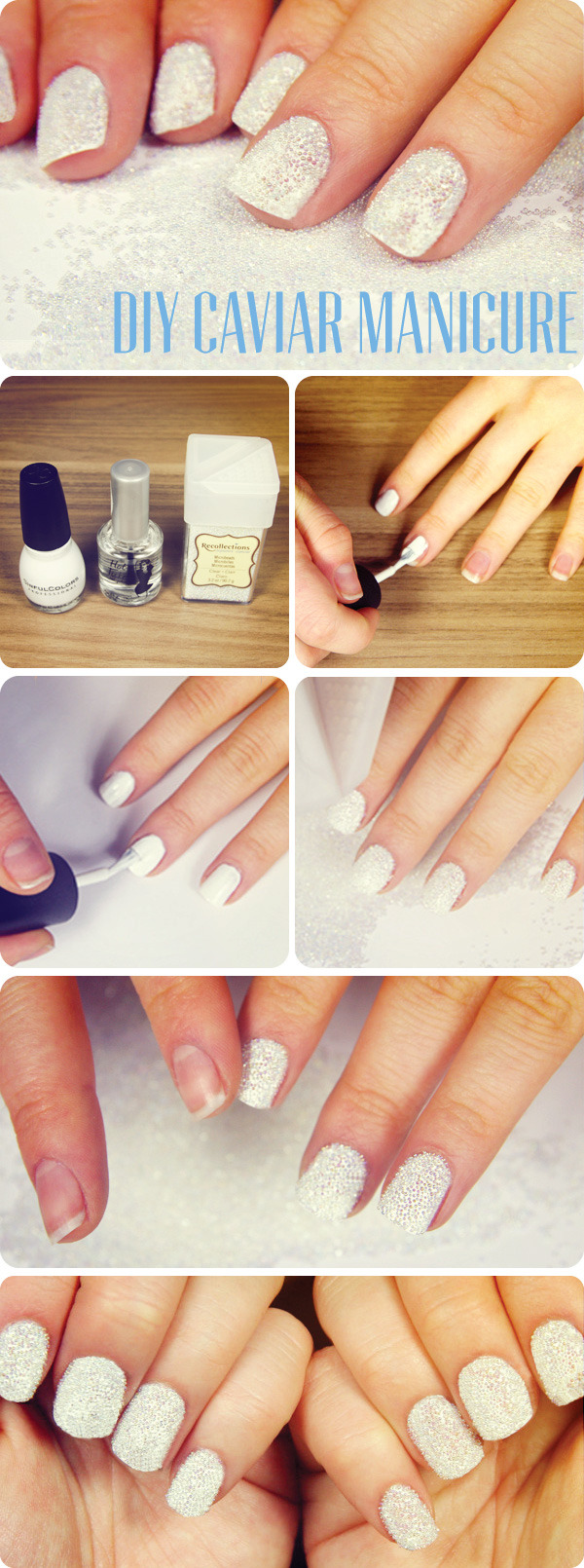DIY Caviar Manicure
YOU'LL NEED:
- Base coat
- Opaque nail polish (no shimmer)
- Clear micro beads (available at most craft stores—we snagged our jar for three dollars!)
- Top coat
STEP 1
THE BASICS
First, apply a clear base coat on completely bare nails. Next, apply one coat of no-shimmer white polish (a thinner formula is best) onto your nails and let them dry. We chose white, but you can use any color with the clear beads.STEP 2
COAT AND CAVIAR
Apply a generous second coat of color to one hand, and let the polish get tacky for 10 seconds. Then, over a sheet of paper, a cup, or a plastic tray, pour the microbeads over your nail bed, ensuring you coat the entire surface of your nail bed like glitter over glue.STEP 3
IM-PRESSED
When each nail is entirely covered, use the pad of your finger to press and secure the caviar beads. Repeat this on your other hand.STEP 4
THE LEFTOVERS
Pour the excess beads back into the jar to save for later, then apply a tiny drop of top coat along your nail tip to seal the caviar. The look should last two or three days before the beads start to fall. Black-tie nails at a bargain price—you can’t beat it!Source : Beautylish

